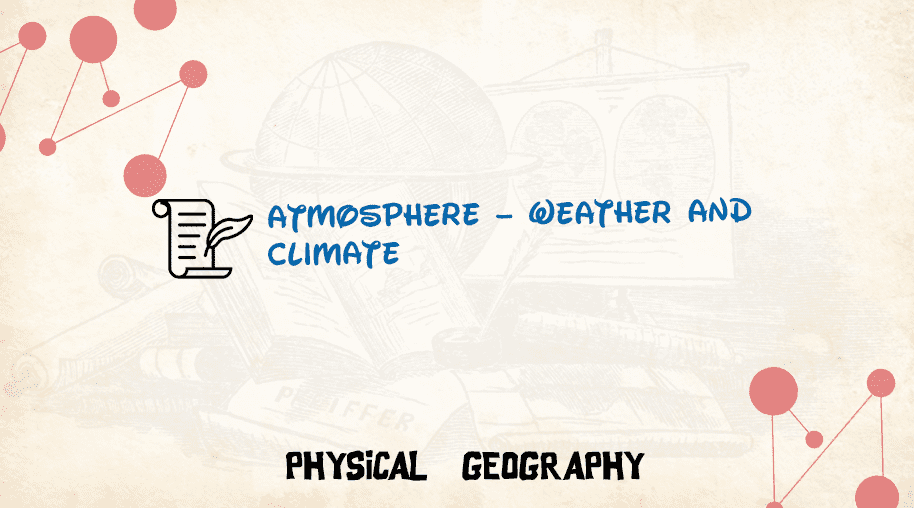Hydrosphere – Ocean Floor Division
by Devender
0 4033
Hydrosphere – Ocean Floor Division
- Ocean Floor Division:
- Continental Shelf:
- It is a Shallow platform
- Its width varies from a few miles to 100 miles from North Pacific off the continent of North America to northwest Europe
- Where the coasts are extremely mountainous, the continental shelf may totally absent
- The angle of the slope also varies from 1 to 500
- The angle of slope is the least where this shelf is widest
- Submersion of part of the continent due to increase in sea level
- By wave erosion
- By off-shore deposition
- Continental Slope:
- Continental Rise:
- Abysmal Plains:
- These are the flattest and smoothest surfaces of the world
- Its average depth ranges from 3000 to 6000 m
- Oceanic Deeps or Trenches:
- Most of the deepest tranches are not found in the middle of the ocean but are present close to the continents
- Marina trench (11 km) of Guam Islands (Pacific Ocean) is the deepest trench in the world
- Ocean trenches are greater in magnitude than the highest mountains
- Gorge vs Canyon:
- Difference between Straits & Isthmus:
- Oceanic Deposits on Ocean Floor:
The Ocean floor is divided into many different parts as you can see in this picture.

It is basically the seaward extension of the continent from the shoreline to the continental edge and is approximately 200 m deep.

The continental shelf can be formed by any of the three reasons:
The shallowness of the continental shelves enables sunlight to penetrate through the water. It enables the growth of minute plants & other microscopic organisms such as planktons, on which millions of fishes and polyps survive. That is why the continental shelves are the richest fishing grounds in the world.
The seaward slope of the continental shelf becomes immediately becomes steep & gradient at the southern edge with an average depth of 200 - 3000 m. Most of the canyons & trenches are present in this region.
Beyond the continental slope, the area is continental rise. It is an area of a gentle slope with angle varying from .5 – 1*. As the depth increases, it basically becomes flat and merges with Abysmal Plains.

When the continental rise ends, deep-sea plains begin. These plains cover 2/3rd of the ocean floor.
Some important terms
It is the deepest part of the oceans and generally deeper than oceanic floors. It occurs at the base of the continental slopes and it contains active volcanos & major earthquakes.
There are thousands of hills that are lying under the ocean water. A submarine peak rising more than 1000 m above the ocean floor is called a Seamount.
The flat-topped seamounts are known as Guyots. These are Volcanic in origin.
Gorge/Trench is a narrow & steep side valley formed by the down-cutting action of the river.
Canyon is a magnified form of Gorge. The Grand Canyon of river colorado (US) is the largest canyon in the world.
| Straits | Isthmus |
| A narrow channel of water connecting 2 large land bodies | Opposite of strait that is a narrow channel of land connecting 2 large water bodies |
| The Strait of Gibraltar connects the Atlantic ocean & Mediterranean sea and separates Spain (Europe) from Morocco (Africa) | Panama Canal crosses the Isthmus of Panama, connecting the North Atlantic and Pacific Oceans |
| Palk Strait separates India & Srilanka | Suez Canal crosses isthmus of the Sinai Peninsula connecting the Mediterranean Sea and Indian Ocean |
Muds:
These are terrigenous deposits in the ocean as these come from the land. These mainly deposit on the continental shelves.
Oozes:
These are driven from the ocean and are pelagic deposits which are made of shelly & skeletal remains of marine micro-organisms with calcareous or siliceous parts. These have a very fine flour-like structure that either deposits or floats as suspension.
Clays:
These occur in the deeper parts of the ocean and are abundant in the Pacific Ocean. Red clay is believed to be an accumulation of volcanic dust blown out from volcanos during volcanic eruptions.

Share:







Comments
Waiting for your comments